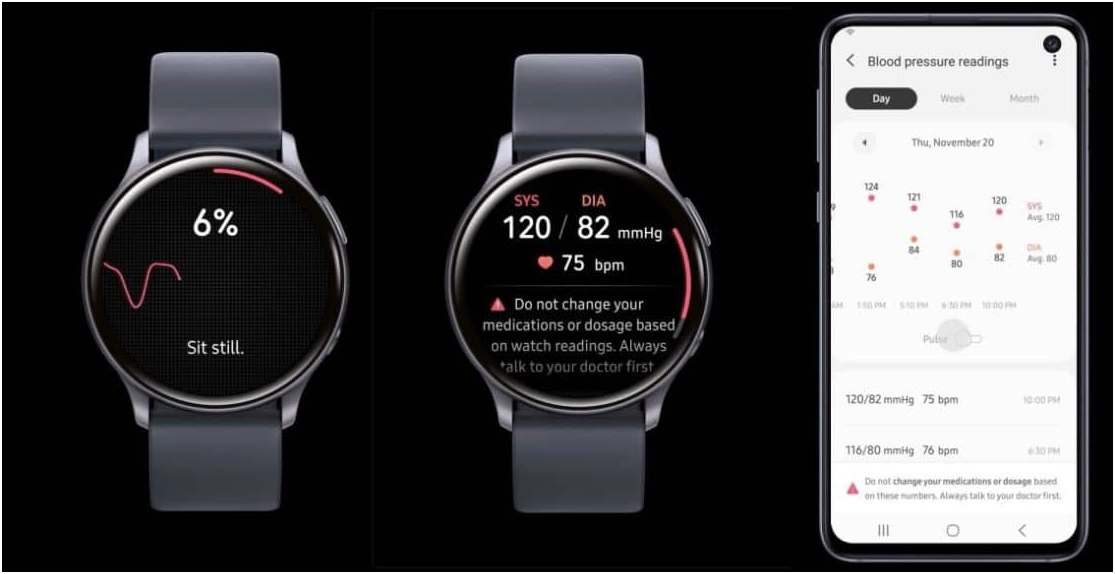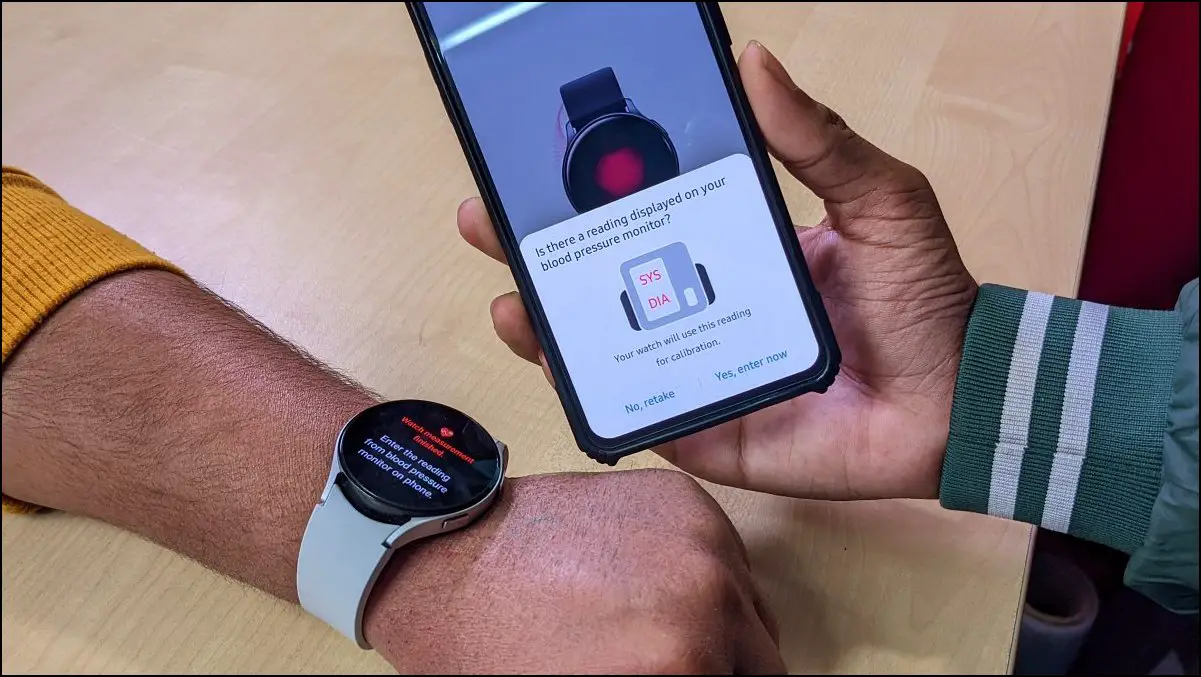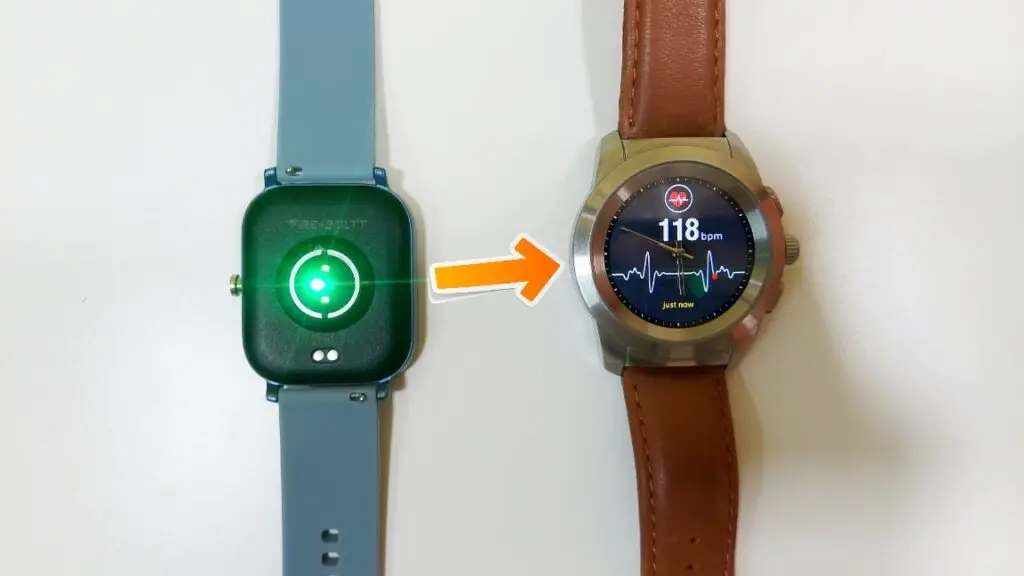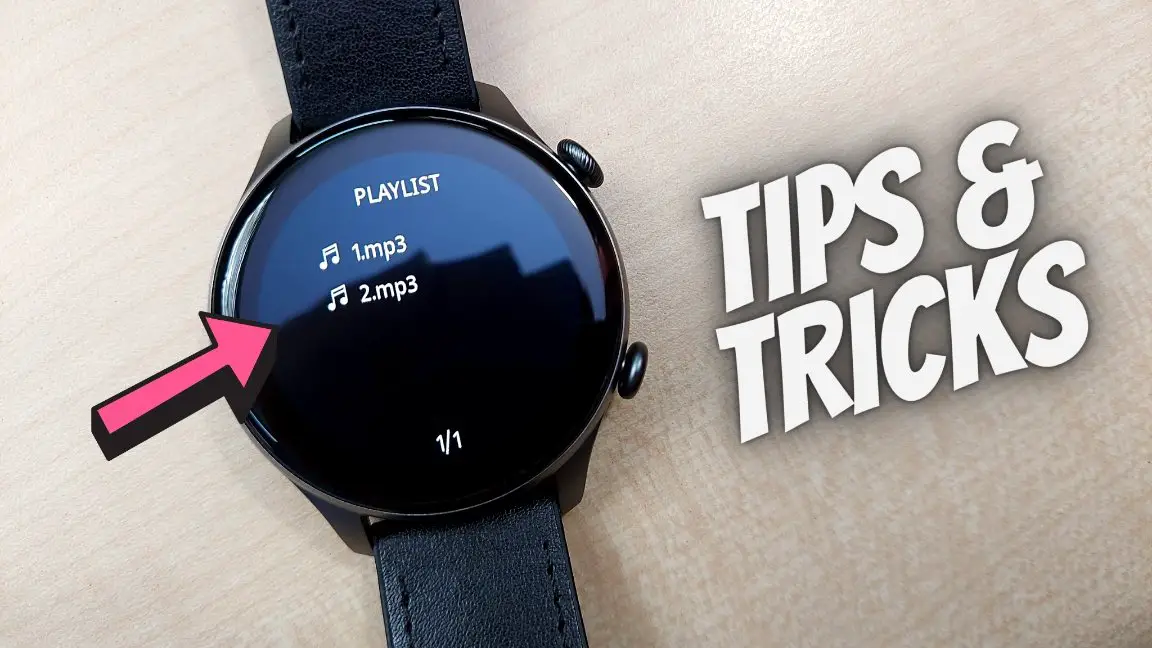We’ve reached a point where health-related features are the reason why smartwatches sell. But at times, companies go overboard and add features that do not work. Take blood pressure for example – it’s one of those vitals that requires much more than contact between your skin and the device to measure the value. But somehow, some smartwatch makers claim to measure blood pressure. Let us understand if that is true, and if it is, how do smartwatches measure blood pressure in the first place?

Related: 5 Ways to Check If Your Smartwatch Has Fake Heart Rate Sensor
Understanding Blood Pressure
The human heart is a pump. To make the blood move around your body, it adds pressure. And once your blood starts moving around, the pressure goes down. Your blood pressure once measured is given to you in two numbers – for example, 120/80 mmHg (millimeters of mercury).
Where, 120 is the highest pressure (when your heart starts to push the blood and 80, is the lowest (just before your heart starts to push the blood). Ideal blood pressure is considered to be between 90/60mmHg and 120/80mmHg.

If your blood pressure is higher, it means that there is increased resistance to the flow of blood in your body. This can be caused due to a lot of factors, but if it is consistently high, it means that there are blockages in your bloodstream. Overall, high blood pressure means that your heart must work harder to keep your blood flowing. This is when you might be advised to remain under medication for the same.
How is Blood Pressure Measured?
Blood pressure is commonly measured using a device called sphygmomanometers – or commonly known as blood pressure cuffs. They are wrapped around your bicep to measure your radial pulse. The human heart pumps blood around the body through tubes called blood vessels. These tubes stretch and squeeze to get more blood to some places of your body or keep blood away from some places of your body.

The cuffs are used to squeeze your arm, which in turn squeezes the blood vessels in your arm, and thus stops the blood from flowing through these vessels. The amount of ‘squeezing’ is measured on a dial. Now, the squeezing is released slowly, and when enough squeezing is released, the blood will now flow through your blood vessels.
This shows that your heart is working strong enough. As the squeezing is released, the amount by which your blood vessels are ‘stretching’ can be measured.
These two numbers – the amount of ‘squeezing‘ and ‘stretching‘ can give us a clear indication, if your blood vessels are working too hard or not – which can indicate high or low blood pressure respectively.
Smartwatches and Blood Pressure
As mentioned earlier, adding features that are related to the user’s health has been of prime focus for companies in the wearables industry. Apple did raise the standards when they started including the ECG feature on the Apple Watch and ever since then, there have been constant attempts by all companies to include more such advanced features.
While smartwatches measure heart rate with a good degree of accuracy, adding a blood pressure monitor could be a great addition to keep the overall cardiovascular health in check.

In 2019, Samsung announced that the Galaxy Watch would be able to measure people’s blood pressure, but was limited to only a few countries and the lack of FDA clearance meant that this feature was not available in the United States. Fitbit too announced a study related to developing a blood pressure monitor, and Apple also is working on its version as well.

As of now, there is just one wearable that is cleared by the Food and Drug Administration to measure blood pressure – from the medical equipment company Omron. We’ll get into Omron later on, but what we need to know is that they use an inflatable cuff inside the band that takes the blood pressure measurement using the traditional squeezing method.
On the other hand, companies like Samsung and Fitbit have a slightly more different approach, where they mainly use light sensors on the smartwatches to calculate blood pressure. These techniques mostly involve measuring relative blood pressure – which needs to be initially calibrated side by side with a traditional measuring device. In the next few sections, we’ll get more into this technique of measuring blood pressure.
Here’s why it would be largely beneficial for smartwatches to include a blood pressure monitor. Pressure measurements taken in a doctor’s office can be slightly less accurate as the person might be slightly anxious about a hospital visit. Our case is that if smartwatches can measure blood pressure, periodically without the user initiating it – then the results might be slightly more accurate. As the user might not be anxious about the entire blood pressure measurement activity.
But the key challenges today, mainly include validating the accuracy of the results and ensuring that the right information is given to the users. This means that smartwatches must be highly responsible in terms of not providing false reassurance for the user regarding a case of high blood pressure.
Blood Pressure Measurement on Samsung Galaxy Watch 4
Among all the popular wearable devices, Samsung Galaxy Watch 4 is one of the popular big names to add a BP measurement feature in a smartwatch. And as mentioned earlier, you need to calibrate the watch with an upper-arm cuff-based blood pressure monitor. You also require the Samsung Health Monitor App as a companion.
It’s also worth noting that the Galaxy Watch 4 will also slowly move out of calibration and has to be calibrated every couple of weeks. While we already published an article as to how to go about measuring blood pressure on Galaxy Watch 4, we’ll focus more on the accuracy of the results in this article.

The main approach of Samsung is based on a measure called pulse transit time. This is the time between the contraction of the heart and when the pulse arrives at a particular body part, such as the wrist. And this is correlated with blood pressure. The faster the pulse transit time, the more the vessels are tightened, and that’s the reason why the pulse travels faster. The optical sensors also check if the vessels are tightening or widening too.
According to research published in the Samsung Mobile Press, findings showed that the blood pressure measured on the Galaxy Watch and the sphygmomanometer was quite comparable. A few users on the popular forum Reddit too, mentioned that the results were quite accurate when compared to the sphygmomanometer. Overall, there’s quite positive feedback with regard to the accuracy.
The only disadvantage is that this requires calibration every four weeks, as per the guidelines given by Samsung. Adding to that, FDA also needs to approve the blood pressure measurement feature on the Samsung Galaxy Watch 4.
Blood Pressure Measurement: A More Direct Approach
Omron HeartGuide Smartwatch with BP Monitor
Meet the Omron HeartGuide – A clinically accurate wearable blood pressure monitor. It is also available in the United States too. One of the main reasons why Omron is useful is that measures your blood pressure over the day. This means that you can measure all of your fluctuations as well, in a very detailed fashion.

The Omron HeartGuide also involves a design that’s an outcome of over 80 patents, that helped in using the smallest of the components for traditional oscillometric measurement. This is done by using an inflatable cuff within the watch band to take a blood pressure reading. This is one of those reasons why the Omron is quite reliable – it still focuses mainly on using a traditional method to measure blood. The watch also is capable of storing up to 100 readings at a time.
Starting reading on the HeartGuide is quite simple, all you need to do is to press the top button and then lift the watch up, to your chest level. It then gives feedback in the form of a buzz, when the elevation is correct, and then starts to take a measurement. During the measurement, you will be required to stay still for about 30 seconds.

Omron’s CEO mentions that the inflatable wrist cuff is rated for 30,000 uses. They also mention that if there is any issue or a problem related to the inner workings of the BP measuring tech, they will replace the watch for free.
Although you can measure your blood pressure from literally anywhere, the process has to be initiated manually. Once Omron gets the FDA clearance, the watch will also receive an update to measure blood pressure during the night as well. This can help raise awareness of many unknown conditions too during the night.
One downside is that the watch is quite big, and by no means as sleek as some popular smartwatches. It also lacks a touch screen and just has three buttons on the side. The screen shows time, steps, sleep hours, and a few basic alerts for calls and text – and it’s highly unlikely this can replace your go-to smartwatch. In conclusion, with great accuracy comes a tradeoff – which is the fact it is an extremely bulky device.
Huawei Watch D With Blood Pressure

Huawei Watch D is another smartwatch that follows the same approach. It employs Huawei TruBP which uses a mini air pump and airbag to measure blood pressure on your wrist. The macromolecular tensile strap, ergonomically-arced airbag, and butterfly clasp are all designed to remain stable during inflation as they measure your BP.
And thanks to the high-precision pressure sensor, a pressure feedback control circuit, and a low flow resistance gas path, the watch promises good accuracy with an error margin of ± 3mmHg.
Huawei Watch D also lets you set customized measurement plans. Based on the same, it will send out blood pressure reminders at scheduled times, like wake-up and bedtime. This way, you can keep a check on your blood pressure and its variations.
Should You Buy Blood Pressure Smartwatches?
In the previous sections, we thoroughly went through three of the most reliable smartwatches in the market to measure blood pressure. If there’s one thing we learned, it is the fact that companies need to be extremely careful when it comes to measuring blood pressure, which is an extremely important body vital. There has to be zero room for any misinformation.
Take a look at Omron – they’ve resorted to using an inflatable cuff, and are okay with compromising the design, and the ergonomics of the watch. The same is the case with Huawei, wherein they’ve used mini airbags and pumps for inflation. And while Samsung doesn’t resort to such tech, they ensure users calibrate the watch with an actual blood pressure monitor. What we can infer from this, is that measuring blood pressure is by no means a straightforward task.
And then, we have brands that claim to measure blood pressure with just the bottom-facing lights, and other sensors which have nothing to do with blood pressure. There is a severe lack of transparency and legitimacy in such devices. We urge users to not naively fall for these claims – as you need to be extremely careful and vigilant when it comes to making decisions regarding blood pressure.
To conclude, most budget smartwatches that claim or show blood pressure shall be taken with a pinch of salt. When you buy a smartwatch, ensure it offers complete clarity concerning the back-end tech of the blood pressure measurement. Make sure to also compare the data with an actual monitor. Unless you do this, we do not recommend anyone use wearables to measure blood pressure.
Wrapping Up
This is all you need to know why most budget smartwatches cannot measure blood pressure and which one’s can actually do it. The need for extra caution is because blood pressure measurement tech needs some significant development to ensure a good degree of reliability. Unless that happens, the measurement can never be a single step or a straightforward practice and it had to involve a degree of skepticism. We hope you found this article interesting, and stay tuned to WearablesToUse for more such interesting guides on all health-related features in smartwatches.



